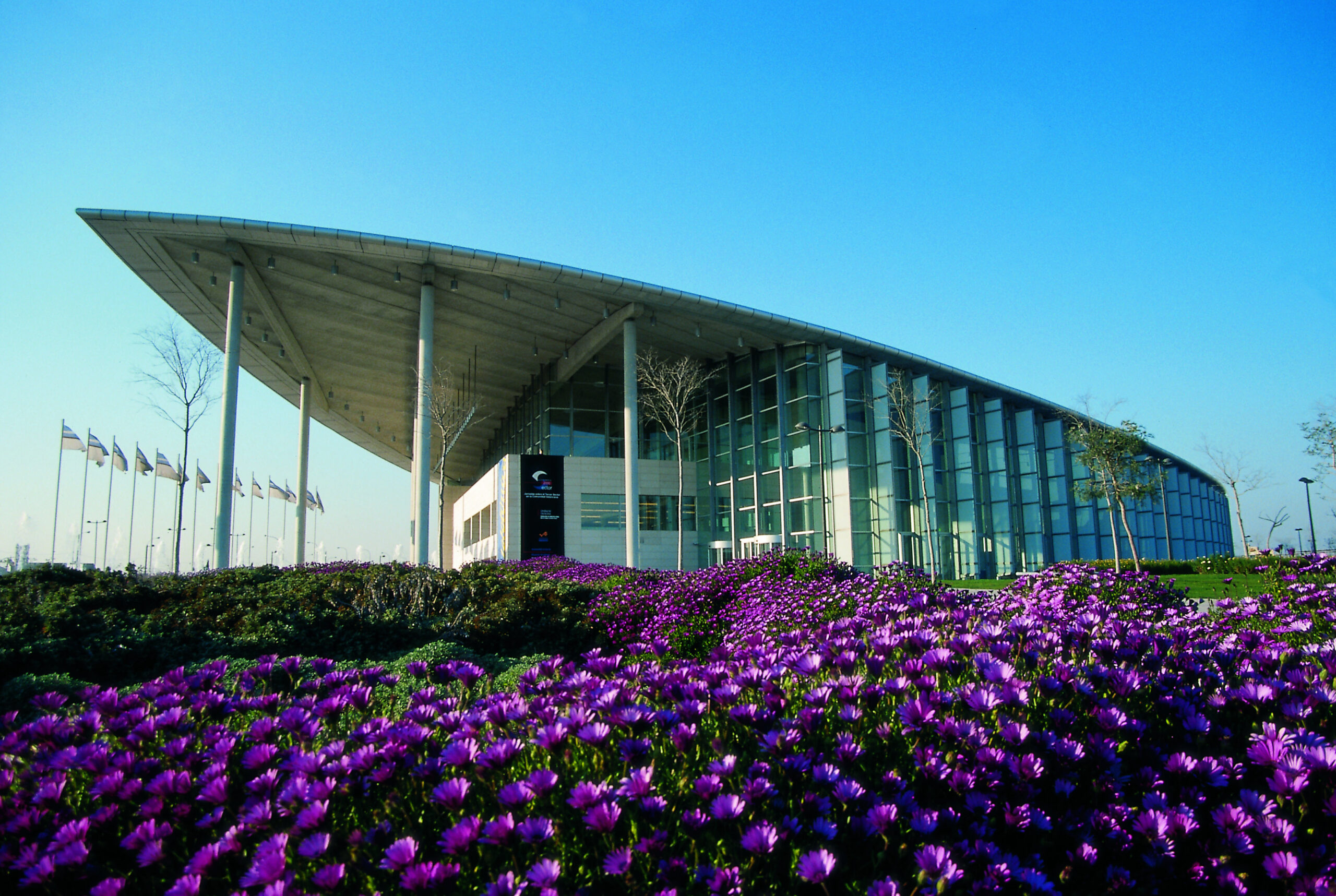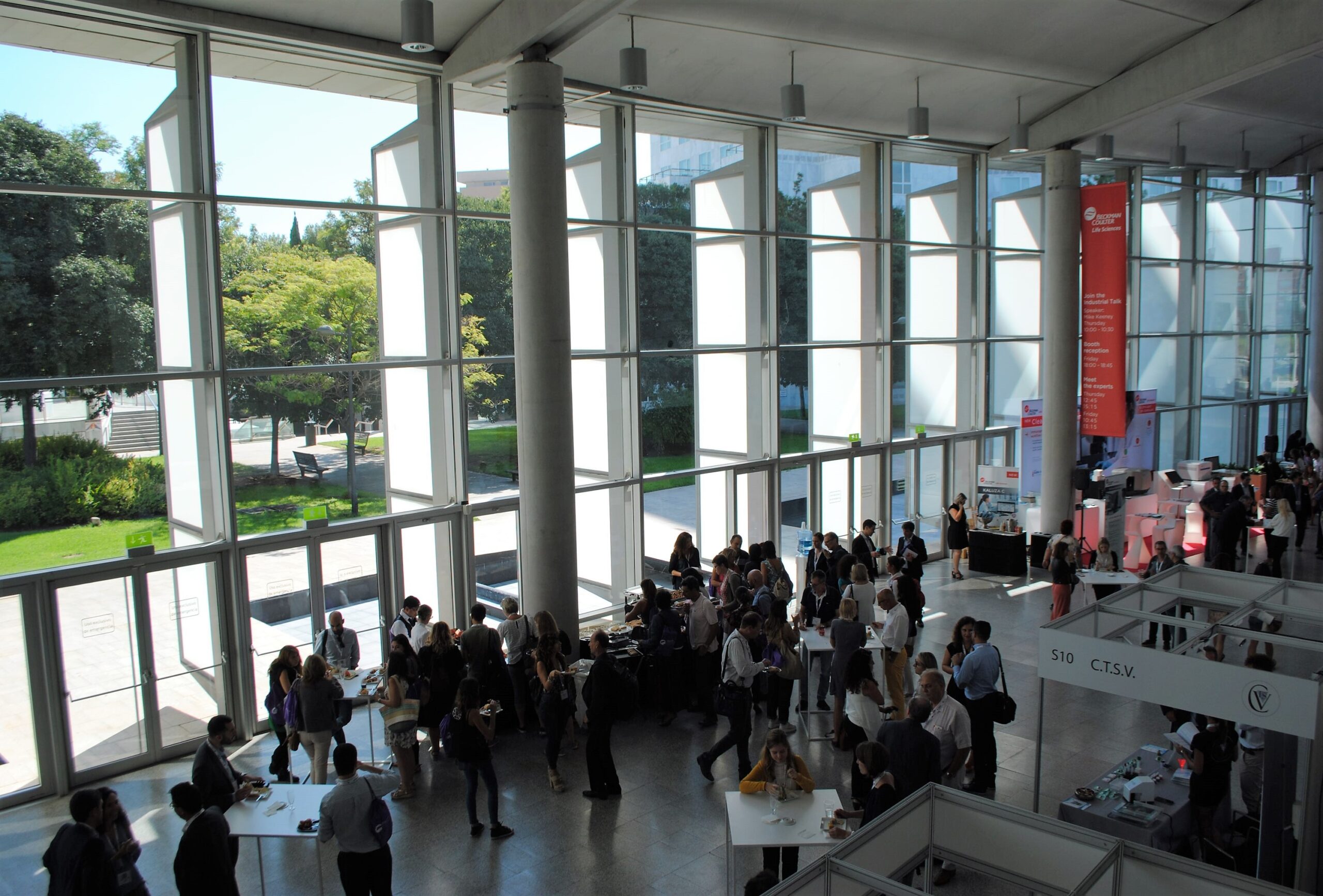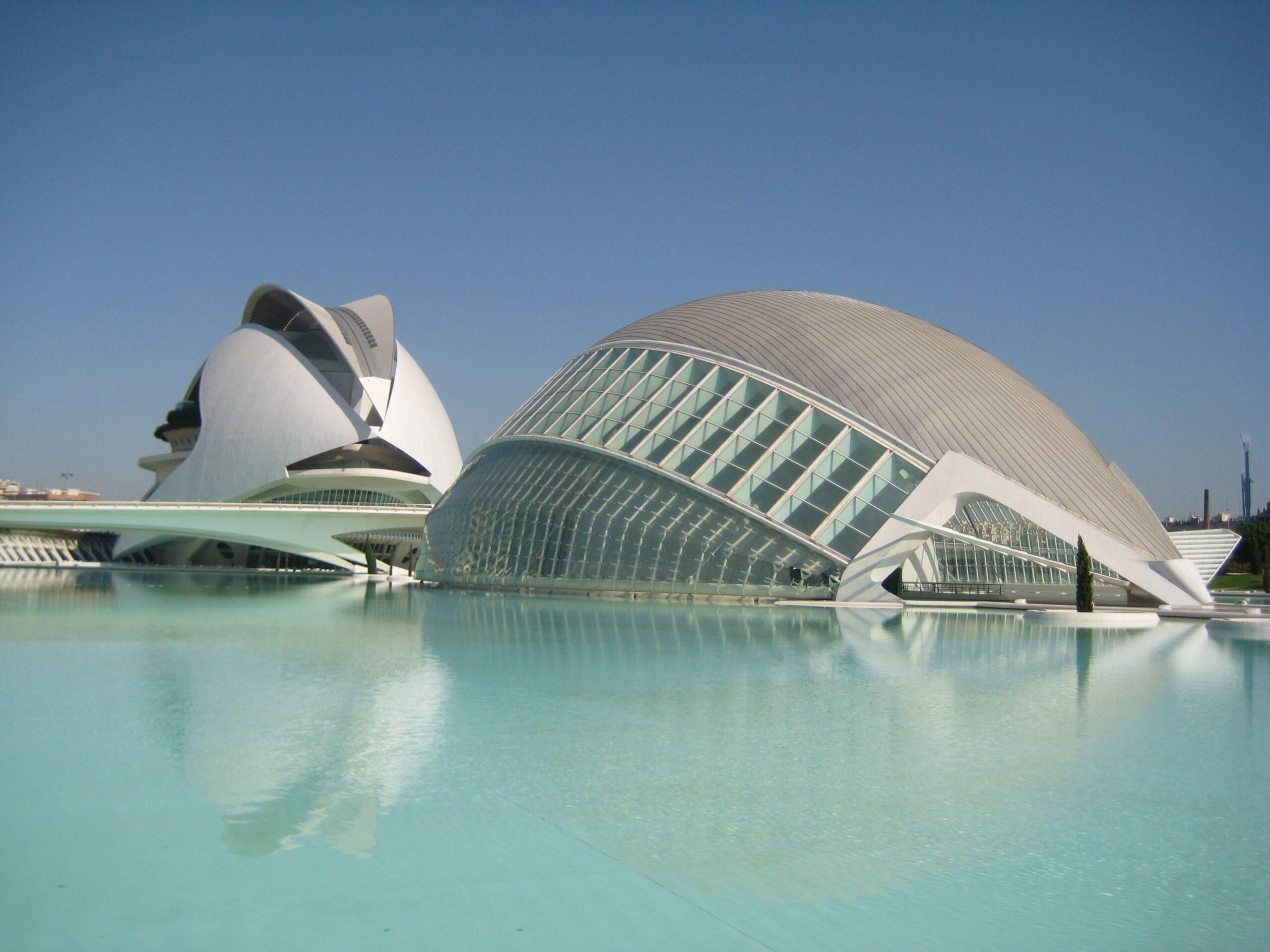
Convention venue
ECU2024 will be held at the Valencia Conference Centre (VCC), ideally located on the major access route into the city from the north east, only 5 km. from the international airport Valencia-Manises.
The building is a landmark architectural work by the celebrated architect Norman Foster. It was awarded Best European Building by the Royal Institute of British Architects a year after its opening in 1999.

Address: Valencia Congress Centre (VCC), Av. Cortes Valencianas, 60, 46015 Valencia
From the airport, a taxi will take you to the Conference Centre and the ECU hotels in 10 minutes. The city centre is only some 10 minutes away and can be easily accessed by metro or bus.
The Convention headquarter’s hotel, the 4-star Sercotel Sorolla Palace, is located next to the Conference Centre. Room blocks in the Sorolla hotel and several other hotels nearby will be arranged at favourable rates and conditions.

Valencia
Valencia is a vibrant, cosmopolitan city on the Mediterranean coast. Spain’s third largest city is without a doubt a place full of contrasts where the remains of a distant past, which began in the year 138 B.C, harmoniously coexist with avant-garde buildings and long sandy beaches.
The city’s compact historic centre is packed with historic sites, squares, gardens, museums and charming little streets. The city’s focus is the Plaza de la Virgen with its 13th-15th century cathedral; the octagonal bell tower offers vertiginous views across the rooftops. The 15th century Serrano and Quart towers are part of what was once the wall surrounding the city. La Lonja, the old silk exchange and a UNESCO world heritage site, has a vaulted hall with exquisitely carved columns. The late 19th century Modernista movement, popularised by Anton Gaudí, flourishes here too – the bustling Mercado Central, Europe’s largest covered market, and the restored Mercado de Colón, now a meeting point for coffee and drinks, are some wonderful examples.
The river Turia originally ran around the old city, but it kept breaching its banks so it was diverted in the 1960s. The riverbed has become a verdant 9 km string of trees, trails, lawns and playgrounds through the heart of the City, which provides a green haven for cyclists, walkers, sports enthusiasts, music lovers and botanists. At the far eastern end of the Turia riverbed lays Valencia’s landmark, the futuristic City of Arts and Sciences, designed by the world-renowned and city-born architect Santiago Calatrava.
